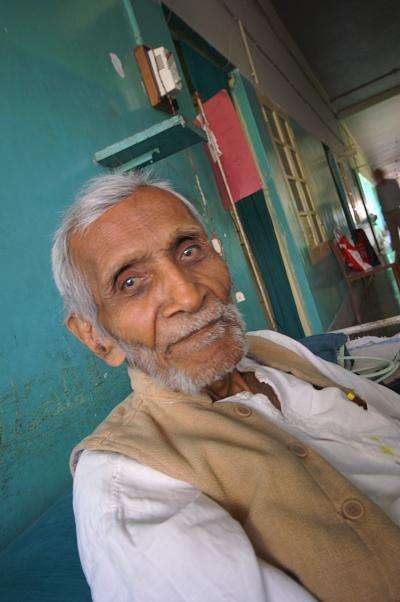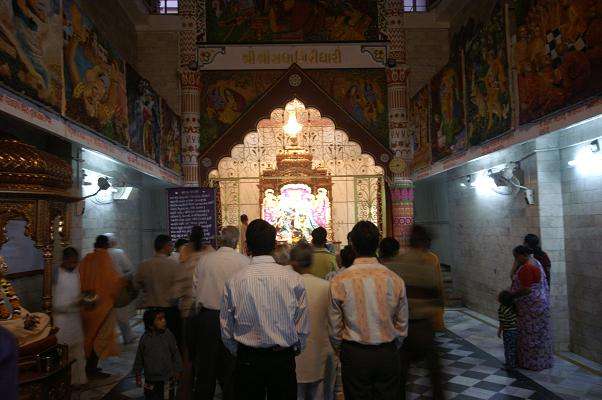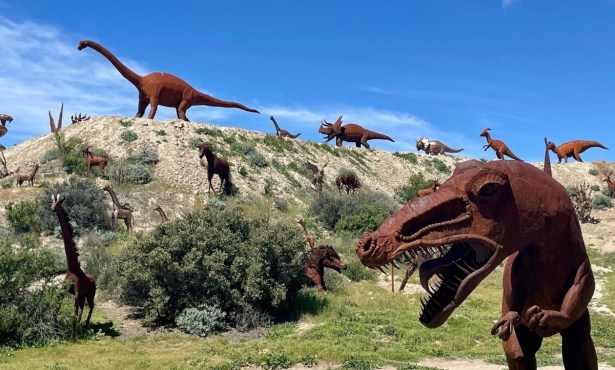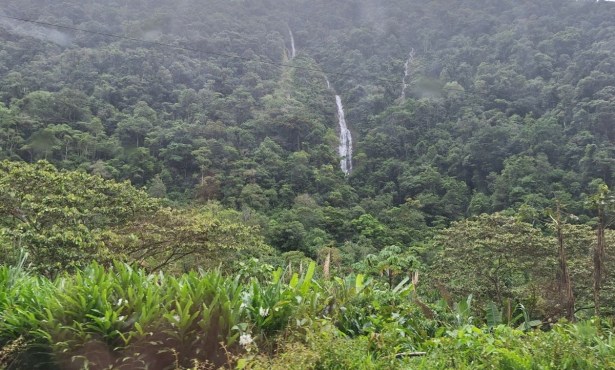The Saintly Doctor and Krishna’s Curse
The India Vitamin Express Hits Gujarat State

February 27: Dr. Doshi, The Saint
When coordinating my present adventure in India, I’d considered skipping the brief 18-hour/two plane-flight detour to Gujarat state, whose main hub and airport is in Ahmedabad, about 400 kilometers or so north of Bombay. But Vitamin Angels founder Howard Schiffer warned me not to, explaining, “Seeing Dr. Doshi is alone worth the trip to India.” He was more than right.
Dr. Ramniklal Doshi runs the Ravishanker Maharaj Eye Hospital, the centerpiece of the Gujurat Blind Relief and Health Association. The doctor, a wise, pious fellow who owns only two white linen outfits and walks barefoot with a wooden cane, has spent the bulk of his 92 years saving the eyesight of poor people in Gujurat state and beyond. His work began in 1949 when he, along with his guru and hospital co-founder Ravishakner Maharaj, began hosting eye camps in villages. (Maharaj died in 1986.) “We had no money. We had no medicine,” said Doshi, “but we were doctors.” Eventually, donations came in, and the camps were a success. He’d spend his mornings working his private practice and his afternoons doing public service. To date, they’ve served more than 604,000 patients and performed nearly 150,000 eye operations.
The hospital itself was built in the 1960s on 18 acres outside the tiny village of Chikhodra, near the small sized town of Anand (150,000 people or so). Bird-filled, squirrel-swarmed fruit trees dot the property, providing the backdrop for a constant battle between three-foot-tall monkeys and angry dogs. In addition to the two-story hospital, which features an impressive “operating theater” where three surgeries can be conducted at the same time, the property features numerous white buildings that house staff, patients, and guests. While we were there, about two dozen patients – men and women, young and old – had recently undergone treatment. And in a back room slept two sickly children, supposedly victims of malnourishment. While eye treatment is their specialty, the hospital cares for health problems of all types, and never turns anyone away.
Visitors, other than our team, included a trio of what Doshi called “saintly men”: these were three Jain monks, who spend their entire lives walking from town to town with no money, begging their way through life. The Jain religion is the epitome of nonviolence – nothing can be killed in a Jain’s wake, so they’re vegetarian, but they will also not eat anything that came from below the soil, lest it kill an insect. That means no garlic, no onions, and no potatoes. The very devout, like these three men, own just two pairs of white robes, cover their mouths with white pads so as to not breathe in a bug, touch neither cash nor women, and spend months in silence. Doshi is also a Jain, and only eats “eight items” per day: two for breakfast before sunrise, four for lunch, and two for dinner, which he takes before sunset.
Doshi and his team then took us to a village called Samrakha, where we were welcomed and did a distribution. As I explained in a previous post, eye doctors make the perfect conduits for Vitamin A distribution, as preventing eye problems with the help of proper nutrition goes hand-in-hand with their medical work.
Later that night, we ate dinner with Doshi as he shared his thoughts on keeping life balanced with us. Though he knows we’re bombarded with bad news about violence and strife everyday across the globe, he reminded, “95 percent of people are good-hearted people.” And if just 5 percent were as good as Dr. Doshi, then we’d all be a bit wiser, healthier, and happier. He’s truly a saintly man.
February 28: Krishna’s Curd Curse
After our village visit with Dr. Doshi, we took a detour through Anand. A trustee of the Kirshna temple had heard we were in town, and wanted to meet us. It would be a turning point, stomach-wise, on our trip.
It all started off amazing. Visiting a Hindu temple is unlike any other religious experience. Saffron-robed monks are playing the tablas and singing verses while getting the attendees into an ecstatic rhythm. Men and women of all ages are dancing and praying, and coming in simultaneously for short visits and long stays. The colors are vivid, the gods are brilliantly adorned, the walls are meticulously decorated. It’s inspirational and infectious. I briefly considered signing on, but then took some photos instead and headed outside.
I found the Vitamin Angels team talking with the trustee in a side office. I was led in there and handed a cup of creamy curd, filled with dried fruit and nut chunks. I’d had the same sort of curd as a dessert during lunch at Doshi’s. It was weird, but tasted okay then, so when the guy told me, “Eat it. it’s out custom,” I gobbled it. Sure, it was a little yellower than the other stuff, and had a bit of a sour twist, but it went down easy enough. Meanwhile, the filmmaker on the journey, Sevan Matossian, ate two cups. (Howard didn’t want his.)

Fast forward to the middle of the night, when I wake up with a bloated stomach. Explosive vomiting ensues. Minutes later, I later learn, Sevan joins in the fun. We wake at 3:50 a.m. to head to the airport for our series of flights to Calcutta. On the way to the airport, on India’s only super expressway – a 90 mile stretch of perfectly paved freeway that will one day connect the whole country – I let loose again out the window at about 60 mph. Sevan follows suit.
Waiting in the ticket line, I nearly have another episode, but manage to make it on the plane, and the next plane, without any more incidents, despite being squeezed for the two hour flight to Calcutta from Bombay between two men eating very potent smelling Indian airplane food. I try to sleep, but I am in the row in front of the emergency row, so I can’t recline. Not good times.
Later that day, my recovery begins, and my appetite slowly returns. Sevan, however, is not so lucky. Despite a steady Cipro regimen, his stomach has yet to fully recover. One day, while stuck in Calcutta traffic, he sums up the experience best. “I oughtta get my head examined. What the f*$# was I thinking? Someone in a temple in India hands me a cup of white creamy stuff, and I eat two of them?!?” For the record, Karen Raterman, another journalist who joined the team at Dr. Doshi’s, ate the cup and did not get sick. “Women are stronger,” she posited. No comment.
Matt Kettmann returns from India on March 5. For more, tune into Independent.com/india.



